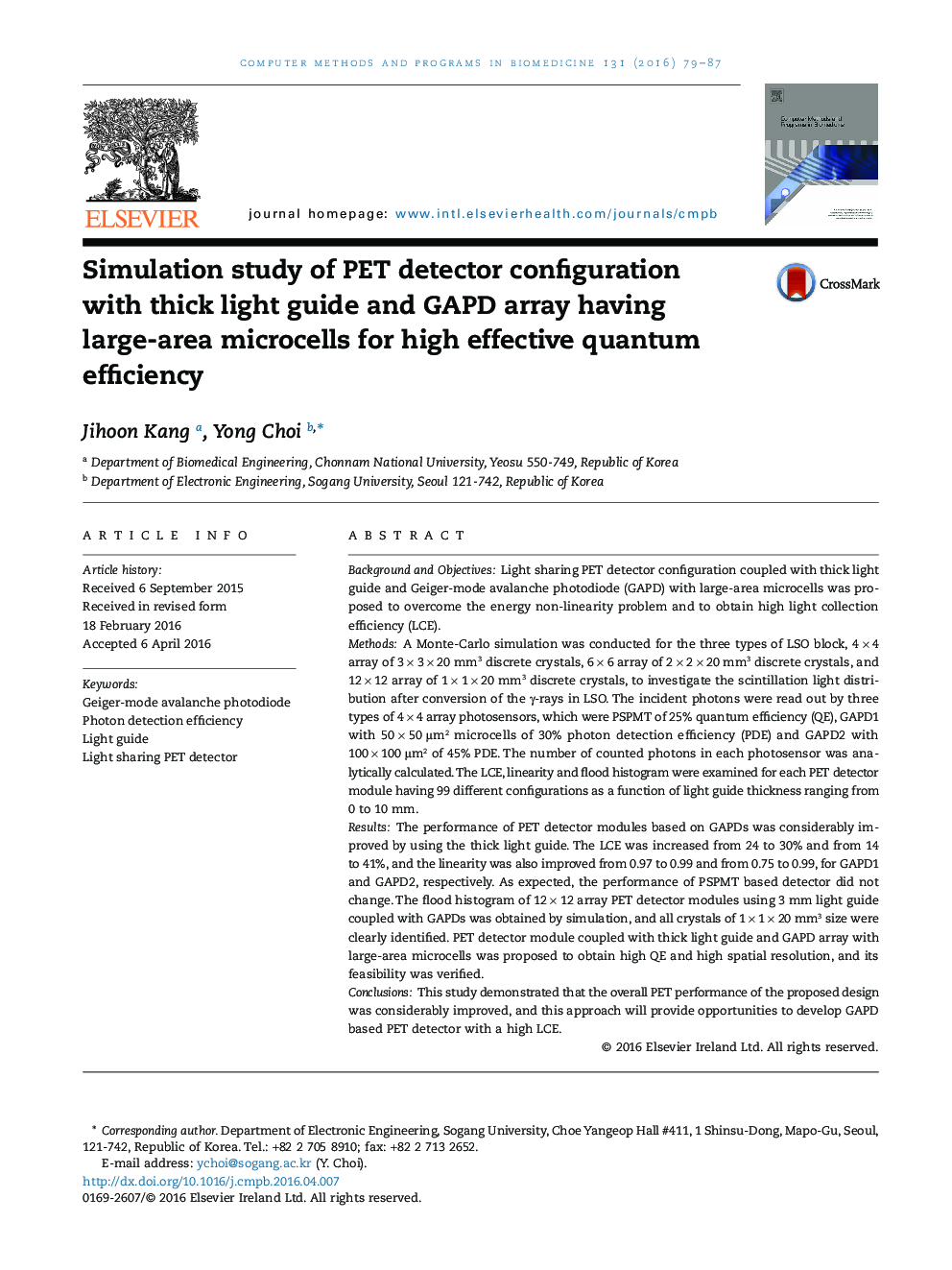| کد مقاله | کد نشریه | سال انتشار | مقاله انگلیسی | نسخه تمام متن |
|---|---|---|---|---|
| 469070 | 698284 | 2016 | 9 صفحه PDF | دانلود رایگان |
• This study proposed and examined a new approach employing the light sharing PET detector configuration with thick light guide and GAPD array having large-area microcells for high effective quantum efficiency.
• The number of counted photons was considerably increased and the LCE of 40% could be obtained with the detector configuration. The flood histogram showed good separation and wide margins between the spots of the scintillators. Moreover, a considerable improvement in the energy linearity performance was observed, and severe saturation effects could be clearly avoided.
• This study demonstrated that GAPDs with large-area microcells, which have not been actively studied as PET photosensors because of their non-linearity properties, could be utilized for PET applications and even high photon flux regime.
Background and ObjectivesLight sharing PET detector configuration coupled with thick light guide and Geiger-mode avalanche photodiode (GAPD) with large-area microcells was proposed to overcome the energy non-linearity problem and to obtain high light collection efficiency (LCE).MethodsA Monte-Carlo simulation was conducted for the three types of LSO block, 4 × 4 array of 3 × 3 × 20 mm3 discrete crystals, 6 × 6 array of 2 × 2 × 20 mm3 discrete crystals, and 12 × 12 array of 1 × 1 × 20 mm3 discrete crystals, to investigate the scintillation light distribution after conversion of the γ-rays in LSO. The incident photons were read out by three types of 4 × 4 array photosensors, which were PSPMT of 25% quantum efficiency (QE), GAPD1 with 50 × 50 µm2 microcells of 30% photon detection efficiency (PDE) and GAPD2 with 100 × 100 µm2 of 45% PDE. The number of counted photons in each photosensor was analytically calculated. The LCE, linearity and flood histogram were examined for each PET detector module having 99 different configurations as a function of light guide thickness ranging from 0 to 10 mm.ResultsThe performance of PET detector modules based on GAPDs was considerably improved by using the thick light guide. The LCE was increased from 24 to 30% and from 14 to 41%, and the linearity was also improved from 0.97 to 0.99 and from 0.75 to 0.99, for GAPD1 and GAPD2, respectively. As expected, the performance of PSPMT based detector did not change. The flood histogram of 12 × 12 array PET detector modules using 3 mm light guide coupled with GAPDs was obtained by simulation, and all crystals of 1 × 1 × 20 mm3 size were clearly identified. PET detector module coupled with thick light guide and GAPD array with large-area microcells was proposed to obtain high QE and high spatial resolution, and its feasibility was verified.ConclusionsThis study demonstrated that the overall PET performance of the proposed design was considerably improved, and this approach will provide opportunities to develop GAPD based PET detector with a high LCE.
Journal: Computer Methods and Programs in Biomedicine - Volume 131, July 2016, Pages 79–87
